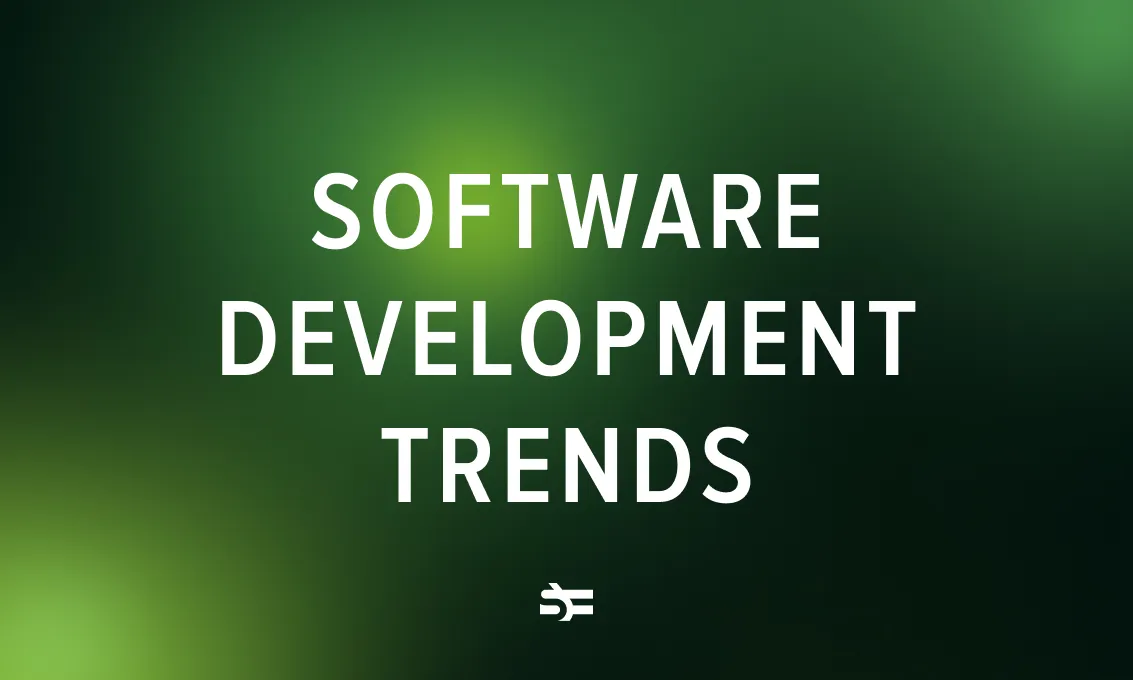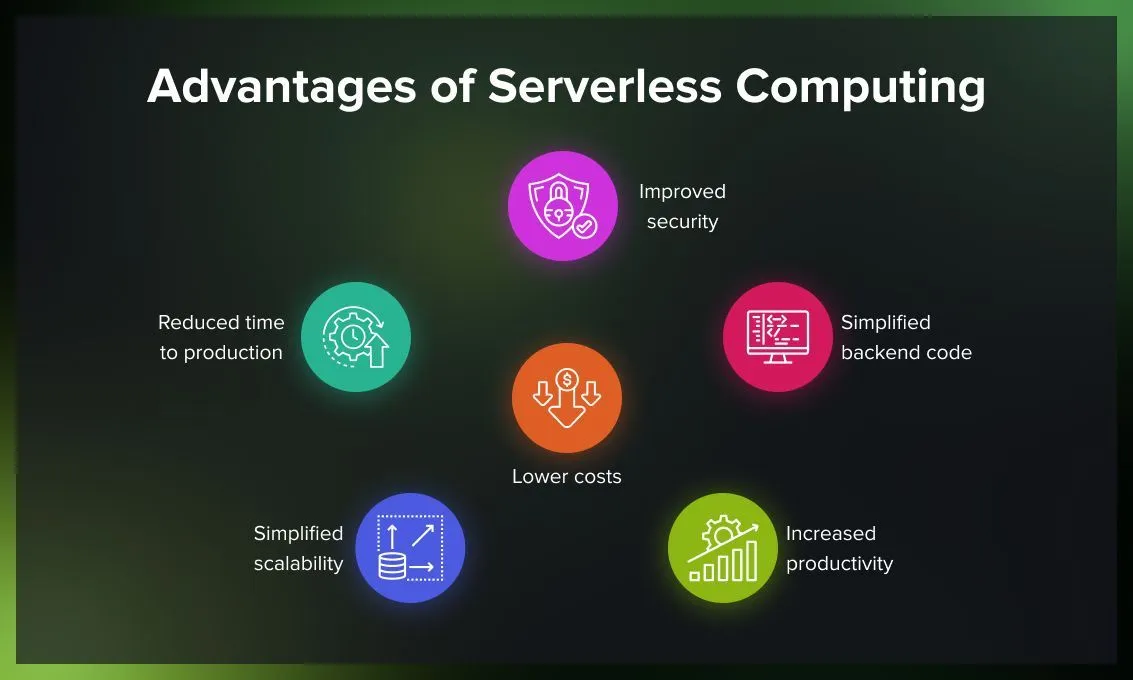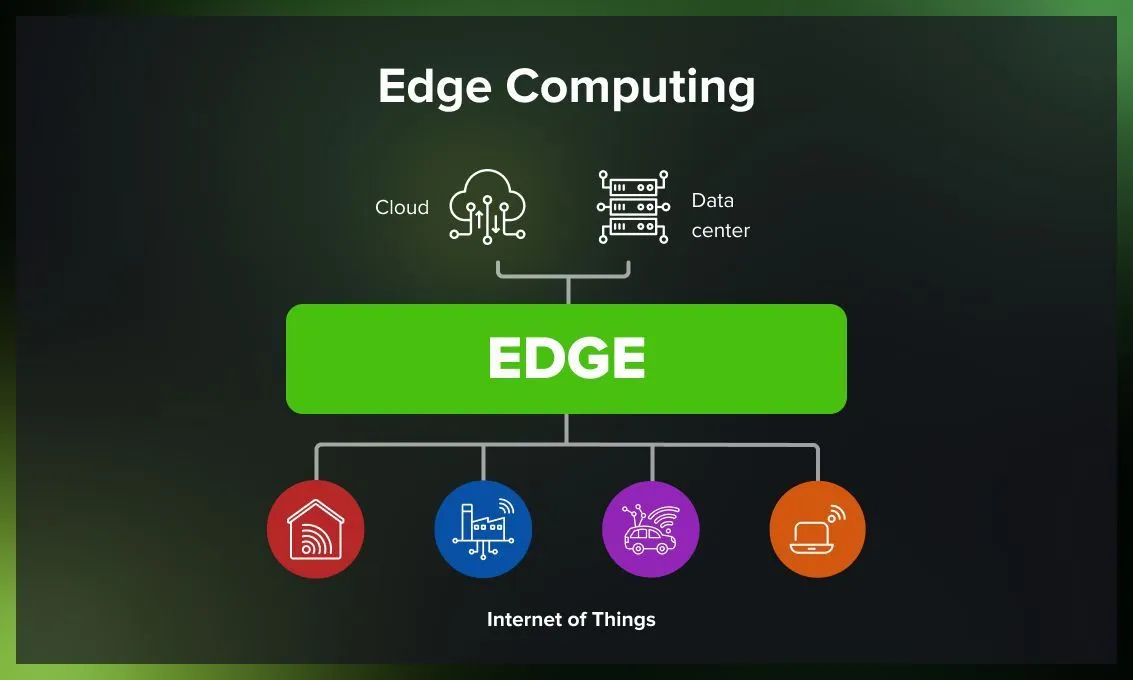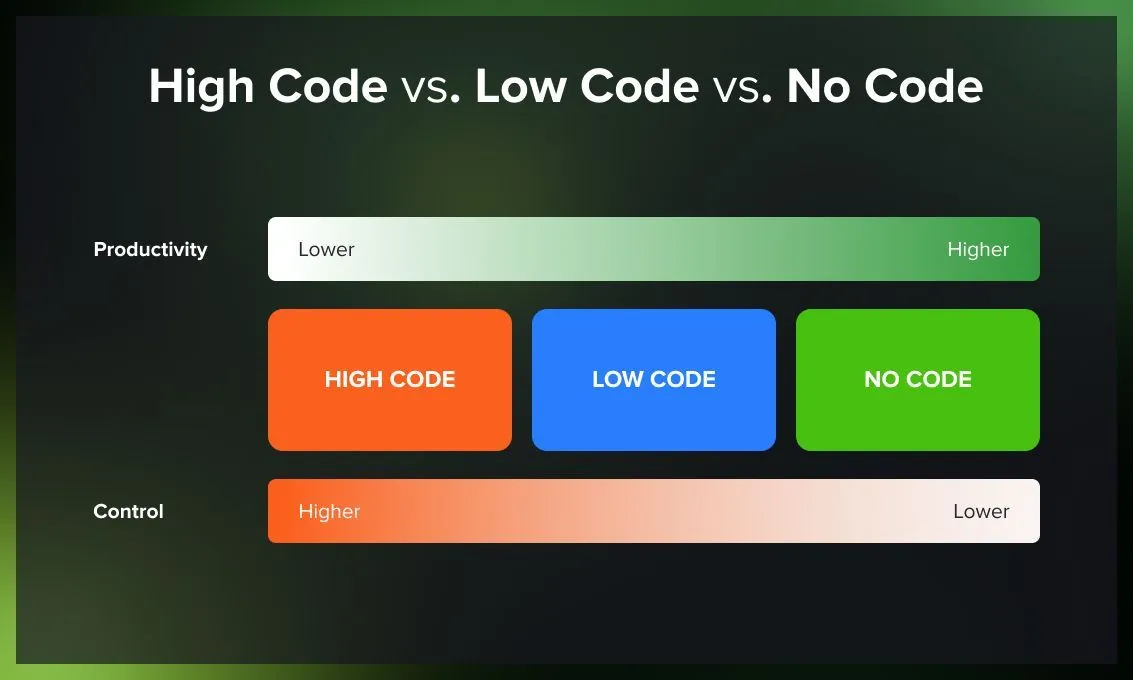
As we step into 2024, the landscape of software development continues to evolve exponentially, driven by technological innovations and changing market needs. For businesses and developers alike, staying abreast of these trends is not just beneficial-it’s essential for remaining competitive and successful. In this article, we explore the key software development trends expected to make a significant impact in 2024.
General principles of software engineering in 2024
The general software development approaches set to define the IT industry in 2024 encompass further integration of AI and ML technologies, utilization of blockchain, and multi-runtime microservices. Expanded application of AR and VR will also continue to shape the industry. Additionally, programmers will put a greater emphasis on cybersecurity and sustainable software development. We explore each of these trends in detail in this section.
Artificial intelligence and machine learning integration
AI and machine learning are not buzzwords anymore; they’re integral components of modern software development, setting new standards for functionality and performance. From predictive algorithms to automated code reviews, AI/ML technologies are enhancing efficiency and capabilities across various industries.
Among the most remarkable breakthroughs of 2023 was the introduction of the advanced ChatGPT features, which included capabilities for code and text generation, as well as significant development of AI-driven image creation based on text prompts.
If you wish to get hands-on experience in text generation, watch this video tutorial:
Developers are using AI-powered coding tools more and more. This not only speeds up the coding process but also helps reduce human errors. For instance, GitHub’s Copilot uses AI to suggest code snippets and entire functions to developers in real-time. Similarly, AI-driven analytics tools like Tableau are enabling businesses to gain insights from their data more efficiently than ever.
Undoubtedly, 2024 will be a year of further development and integration of these technologies, particularly in automating text, coding, and visualization tasks.
Blockchain beyond cryptocurrencies
Blockchain is finding its footing beyond cryptocurrencies. The surge in mobile applications prioritizing enhanced security and superior quality has led to an increased adoption of blockchain-based apps.
The essential characteristics of Blockchain-Oriented Software (BOS) systems include:
- Data replication: Data is duplicated and stored across thousands of systems, significantly bolstering data security.
- Requirement verification: Before proceeding with any transaction, BOS systems check the transaction requirements to ensure they meet the criteria for successful validation.
- Sequential transaction logging: BOS records transactions in a chronologically arranged log consisting of interconnected blocks set up through a consensus algorithm.
- Public-key cryptography: The transaction process in BOS is based on public-key cryptography, ensuring secure and verifiable transactions.
However, blockchain has its limitations as well: scalability and energy consumption remain hurdles to its broader adoption.
Multi-runtime microservices
Microservices architecture is a method of developing software applications as a suite of small, independently deployable, and modular services, each running in its own process and communicating with lightweight mechanisms, often an HTTP-based API.

In 2024, microservices architecture is expected to continue its growth, gradually evolving into multi-runtime microservices. This is also known as MACH architecture, a term created from the first letters of Microservices-based, API-first, Cloud-native, and Headless. MACH architecture allows different services to be written in various programming languages, to use different data storage technologies, and to be deployed on different runtime environments. This diversity in runtimes caters to the specific needs and characteristics of each service, enabling a more tailored and optimized approach for each component of the application.
The primary advantage of a multi-runtime microservices architecture is its ability to leverage the strengths of various technologies and platforms. For instance, a service that requires high computational power can be deployed on a runtime environment specifically designed for such tasks, while another service that deals with real-time data processing can utilize a different environment optimized for speed and low latency. This approach not only ensures that each service operates in its ideal environment but also facilitates easier updates and maintenance, as changes to one service do not necessarily impact others.
Additionally, multi-runtime microservices support a more agile development process, allowing teams to work on different services simultaneously without dependencies.
Cybersecurity at the forefront of 2024
The increasing sophistication of cyber threats has made security a critical aspect of software development for 2024. Integrating advanced security protocols and utilizing AI for threat detection are becoming standard practices. The focus is shifting from reactive to proactive security measures:
- Emphasis on DevSecOps: Companies are integrating security into their DevOps processes, creating a culture where security is a shared responsibility among all stakeholders. This approach ensures that security considerations are an integral part of the entire software development lifecycle.
- Zero Trust architecture: The traditional perimeter-based security model is being replaced by the Zero Trust framework, which operates on the principle of “never trust, always verify.” This means verifying every user and device, regardless of whether they are inside or outside the organization’s network.
- Increased use of encryption: With data breaches on the rise, there is a growing trend towards the use of robust encryption methods to protect data both in transit and at rest. Advanced cryptographic techniques, like homomorphic encryption, are gaining traction, allowing data to be processed while still encrypted.
- Focus on secure code practices: There’s an increasing emphasis on training developers in secure coding practices. This includes regular code reviews, vulnerability testing, and using static and dynamic analysis tools to identify and mitigate security flaws during the development phase.
- Rise of cybersecurity mesh: This concept refers to a flexible, modular approach to security, where each device gets its own security, like firewalls and network safeguards. It helps in creating a more responsive and adaptable security infrastructure, capable of handling the dynamic nature of modern cyber threats, making the whole network safer.
Further adoption of AR and VR
With AR and VR technologies becoming more accessible, demand for such applications is skyrocketing across multiple industries:
- Education: VR transforms education, enabling interactive history, geography, and science lessons, and offering risk-free medical training through virtual surgery simulations. For example, through Google Expeditions and other educational AR apps, students can explore historical sites, dissect virtual animals, or examine 3D models of complex subjects.
- Healthcare: For example AccuVein, an AR app, helps locate veins for easier needle insertion, and surgical planning tools that overlay 3D models onto a patient’s anatomy for precise surgical guidance.
- Business: VR is increasingly used in business for prototyping, staff training, and customer service. In the real estate industry, companies utilize VR/AR to provide virtual property tours and AR apps to visualize how furniture or renovations might look in a space before making a purchase.
The exciting developments we look forward to in 2024, among others, include:
- Hyper-realistic virtual reality: VR can now simulate real-world sensations, like the feel of rain or the smell of a summer meadow, blurring the line between virtual and reality. And this trend is set to grow.
- Expansion of social VR platforms: Social VR platforms allow for real-time interactions, hosting virtual parties, attending concerts, and engaging in multiplayer games.
- Integration of AI in VR: AI personalizes experiences by adapting to user behavior, creating dynamic environments that respond to individual preferences and actions.
In this video, you will find examples of hyper-realistic VR:
Sustainable software development
Green computing and sustainable software practices are gaining attention as environmental concerns grow. Developers are increasingly focusing on eco-friendly solutions, supporting initiatives like Green Software Foundation and Sustainable Web Manifesto which promote energy-efficient coding practices. This entails developing code that reduces server processing, loading times, and data requests.
Key aspects of sustainable software development include:
- Software optimization: Streamlining code to reduce energy use and improve performance.
- Deployment: Using resources only as needed, like lazy functions and cloud-based applications, to minimize energy waste.
- Integrations: Reducing data processing between systems to avoid unnecessary data usage.
- Stored data: Restricting the quantity of data stored and the length of time it is kept in the system.
- Data size: Using smaller-sized media where possible to reduce storage and processing needs.
- Refactoring: Regularly updating software to remove outdated or unused features.
- Avoiding third-party components: Reducing reliance on large external components that consume more resources.
- Software architecture: Using architectures that enhance efficiency and lower energy use.
- Data center choices: Selecting hosting services that are committed to green practices.
Computing
In the coming year, we anticipate advancements in key computing areas: Function-as-a-Service, cloud and edge computing, and most notably, quantum computing.
Serverless computing (FaaS)
Serverless computing, or Function as a Service (FaaS), is on the rise, with AWS Lambda, Azure Functions, and Google Cloud Functions leading the field. FaaS allows developers to build and run applications and services without managing infrastructure, leading to more efficient and cost-effective development processes.
- One notable example is Netflix utilizing AWS Lambda for various purposes within its streaming platform. Netflix leverages Lambda for tasks like encoding videos, handling user authentication, and managing backend processes. When a user uploads a video, Lambda functions are triggered to encode and process the content into various formats suitable for streaming across different devices. This allows Netflix to dynamically scale resources based on demand without provisioning or managing servers, ensuring seamless streaming experiences for users while optimizing costs.
- Spotify utilizes Google Cloud Functions to handle various backend tasks within its music streaming platform. Functions are triggered to manage user authentication, process user-generated content, and perform backend tasks for their music recommendation algorithms, ensuring a seamless and personalized experience for users.
- IBM’s subsidiary, The Weather Company, uses IBM Cloud Functions to process and analyze large volumes of weather data. Serverless functions enabled them to perform real-time data processing, generate forecasts, and deliver personalized weather alerts to users based on their locations without the need to manage underlying infrastructure.

These FaaS solutions, characterized by event-driven architecture, automatically trigger execution in response to requests and adjusts resource use as needed. Its scalability and responsiveness simplify the development process, particularly suited for high-traffic applications. Serverless computing is increasingly integrated with IoT, chatbots, and virtual assistants.
Expansion of cloud computing
In 2024, cloud-native technologies are set to undergo substantial evolution. They are anticipated to become more user-friendly, offering enhanced performance, cost savings, and greater flexibility in their IT objectives. Amazon Web Services (AWS), Microsoft Azure, and Google Cloud Platform expand their services, providing more advanced analytics, machine learning capabilities, and better security features.
In this video, you will find a concise overview of the various applications of cloud computing:
This motivates companies to migrate to the cloud for better data management, enhanced collaboration, and improved security.
Surge of edge computing
Edge computing is an IT architecture that processes client data at the network’s edge, as close to the source of the data as possible. By bringing computation closer to data sources, edge computing reduces latency and enhances real-time data processing capabilities.

This trend is key to applications requiring immediate data analysis, such as autonomous vehicles (Tesla’s self-driving cars, for example, rely on edge computing) and smart city technologies. In healthcare, edge computing ensures data privacy and enables AI-based real-time monitoring and analysis of the patient’s condition. This technology can also transform city traffic management by optimizing bus schedules, regulating traffic lanes, and potentially guiding autonomous vehicle flows, demonstrating its versatility and impact across diverse domains. Edge computing is crucial for the adoption of smart grids, helping enterprises manage energy consumption efficiently.
Quantum computing: a new frontier
Quantum computing is an advanced form of computing that uses quantum bits, or qubits, instead of classical bits. Leveraging quantum mechanics principles such as superposition and entanglement, it allows for processing data at speeds unattainable by traditional computers. This technology is particularly effective for complex tasks like cryptography, optimization, and molecular simulation, providing exponentially faster solutions.
This video provides a brief explanation of the foundational principles of quantum computing:
While the widespread adoption of quantum computing is still a way off, the ripple effects on software development are beginning to show. Among the leaders are such heavyweights as IBM, Microsoft, Google, D-Wave, and Amazon. IBM is a frontrunner with its Quantum System One and Two, featuring powerful processors of up to 127 qubits. Microsoft focuses on topological qubits, integrating them into its Azure cloud platform for wider accessibility. Google’s Quantum AI lab aims to develop a practical, universal quantum computer, while D-Wave specializes in quantum annealing, addressing complex optimization challenges. Amazon, through its AWS Centre for Quantum Networking and Amazon Braket, is creating an extensive infrastructure for quantum computing.
Programming languages
In 2024, programming will continue to be dominated by Python, with a notable increase in the adoption of Rust.
Python dominance
Python remains a dominant programming language, favored for its simplicity, versatility, and robust library support. It’s widely used in web development, data analysis, artificial intelligence, and scientific computing.
Python ranks as the most popular programming language with the highest growth rate (19%) according to the PYPL index, which measures how frequently language tutorials are searched on Google.
The 2023 Stack Overflow survey identifies Python as the most desired language for developers to learn. Surpassing Java for the first time since 2012, Python is no longer just among the top two web app development languages. It has also been awarded the TIOBE Programming Language of the Year three times in five years, a recognition given to the language with the largest annual increase in ratings. Python’s extensive library range, which can easily integrate into code and scale to larger applications, offers vast possibilities for both web and desktop app development, including system operations.
Growth in Rust adoption
The adoption of the Rust programming language is on the rise, especially in fields where performance and safety are key priorities. Its unique features make it ideal for system-level programming. Notably, Rust is increasingly used in embedded systems, where its ability to prevent memory errors and ensure thread safety is crucial. Additionally, its deployment in cloud infrastructure highlights its reliability and efficiency in handling high-performance computing tasks.
Application development
In the world of applications, significant trends include the broader adoption of low-code and no-code platforms, advancements in cross-platform development, and the increasing use of progressive web applications.
Rise of of low-code and no-code platforms

The democratization of software development is being propelled by the rise of low-code and no-code platforms. These tools empower individuals with minimal coding knowledge to build and deploy applications, significantly reducing development time.
Platforms like Microsoft Power Apps and Bubble are enabling non-technical users to build applications without writing code. These tools are especially popular for developing business apps, allowing companies to rapidly prototype and deploy solutions without a large development team. However, such platforms are not able to solve complex custom development tasks.
Increase in progressive web applications (PWAs)
PWAs (Progressive Web Apps) are faster and less resource-intensive to download than native apps. They work offline and automatically refresh with each visit. From a development perspective, they are cost-effective and efficient, requiring fewer versions for different devices, leading to costs that are 3 to 4 times lower than native apps. Major companies like Forbes, Starbucks, and Pinterest have adopted this technology.
A key factor in the rising popularity of PWAs (Progressive Web Apps) among developers is their platform independence. This eliminates the need for creating separate apps for mobile, tablet, and desktop. The simplicity of development is not the only cost-saving benefit of PWAs. They are also faster to create and cheaper to maintain.
Watch this video to learn how to build a PWA:
Cross-platform app development
Since the emergence of mobile applications, developers have faced the choice between creating two native applications for Android and iOS or a single cross-browser app. Native apps, due to their superior performance, have predominantly dominated the market.
The significant development of 2023 which will continue to gain momentum in 2024 is the introduction of new tools that enable the delivery of user-friendly cross-platform solutions, while simultaneously cutting down on development costs.
Cross-platform applications offer multiple advantages:
- Broader reach: Can be used on multiple operating systems (iOS, Android), increasing the potential user base.
- Faster development time: Single development project instead of multiple native apps speeds up the process.
- Consistent user experience: Cross-platform applications have a uniform look and feel across different platforms, enhancing user familiarity.
- Shared codebase: Code reusability and efficiency in development.
- Easier deployment: Updates are rolled out simultaneously across all platforms.
- Resource efficiency: Requires fewer resources and a smaller development team.
- Cost-effectiveness: Reduced development and maintenance costs as a single codebase is used for multiple platforms.
Popular cross-platform frameworks include: React Native, Flutter, Ionic, etc.
Conclusion
The trends discussed in this article are set to define the field of software development in 2024 and beyond. We at Serokell believe that as we navigate these changes, responsible and ethical innovation must remain the cornerstone of all software development endeavors.
We gather the latest trends and recent discoveries to share through our blog. Stay updated with our posts by subscribing to our newsletter and following us on social media to remain at the forefront of IT innovations in 2024.
• • •
Originally published at https://serokell.io.